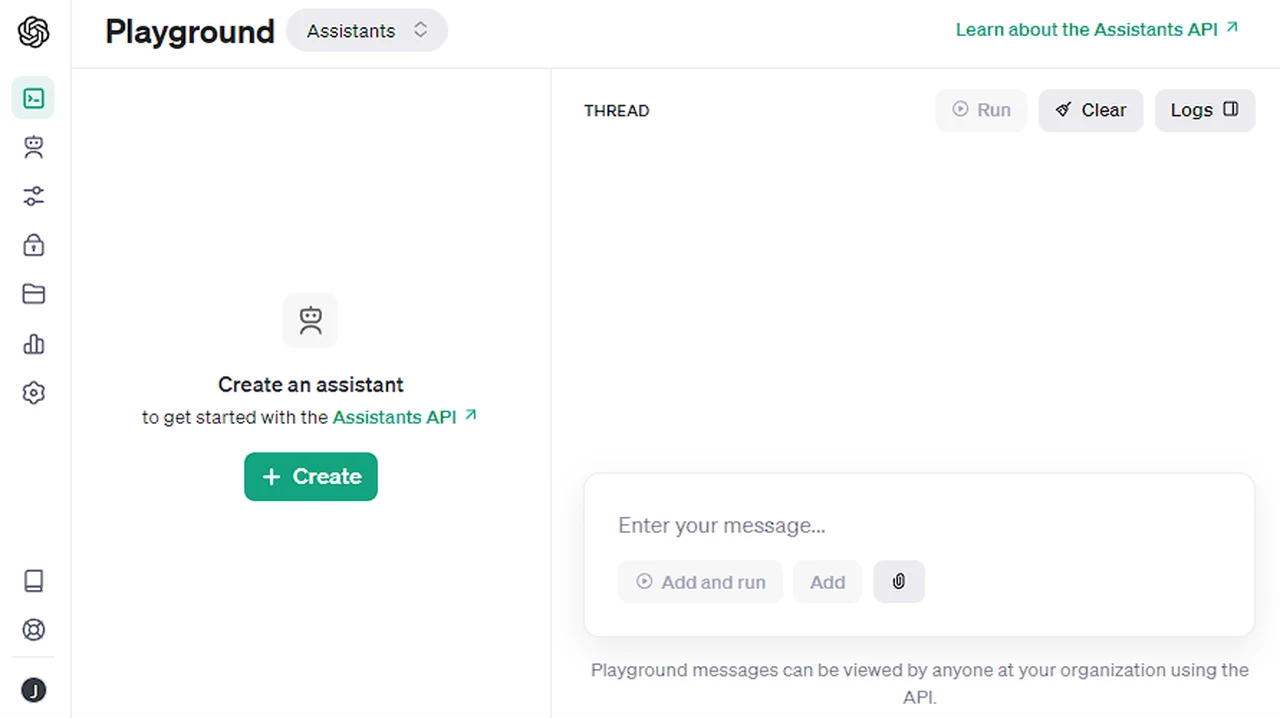with the advent of OpenAI’s Assistants API. This cutting-edge tool enables you to craft a virtual assistant that’s perfectly aligned with your specific requirements. These assistants are not only adept at comprehending your commands but also skilled in executing them through the use of advanced AI models. The following guide will take you through step-by-step the process of creating such an assistant swiftly and efficiently, in under five minutes, utilizing the OpenAI Playground.
Building a GPT Assistant using OpenAI Playground is a streamlined and effective process. Following these straightforward steps will not only the able to create your very own AI powered applications but also offer a more interactive and responsive user experience. The future of application development is being reshaped by AI, and by building your custom AI assistant, you can witness firsthand the transformative impact it has on digital interactions, , workflows and productivity.
Step-by-Step Guide to Creating a GPT Assistant
Why not build a team of AI agents to help you streamline your business processes or personal research.
Other articles we have written that you may find of interest on the subject of making GPTs :
- Identify the Purpose and Scope:
- Determine the specific tasks or problems you want the GPT assistant to address.
- Clearly define the scope of the assistant’s capabilities and limitations.
- Choose the Right GPT Model:
- Select an appropriate Generative Pretrained Transformer (GPT) model. Consider factors like language capabilities, processing power, and the complexity of tasks it needs to handle.
- Define Instructions and Parameters:
- Outline the instructions that the assistant will follow. This includes command structures, expected inputs, and desired outputs.
- Set parameters for the assistant’s behavior, such as tone, level of detail, and formality.
- Integrate Supporting Tools (if needed):
- Depending on the assistant’s function, integrate tools such as a Code Interpreter, Retrieval system, or Function calling capabilities.
- These tools enhance the assistant’s functionality, allowing it to perform complex tasks or retrieve specific information.
- Develop the User Interface:
- Design a user-friendly interface for interaction with the GPT assistant.
- Ensure the interface is intuitive and accessible, considering the needs of your target audience.
- Program Interaction Flows:
- Map out the conversation or interaction flows. Determine how the assistant will handle different types of queries and commands.
- Program responses to common questions or scenarios.
- Train and Customize the Model:
- If necessary, further train the GPT model with specific data sets to tailor its responses to your needs.
- Fine-tune the model to understand and respond to your unique application’s context and jargon.
- Test and Iterate:
- Conduct thorough testing to ensure the assistant performs as expected.
- Gather feedback and make adjustments to improve accuracy, efficiency, and user experience.
- Deploy the Assistant:
- Once satisfied with its performance, deploy the GPT assistant in your environment.
- Ensure it is compatible and seamlessly integrated with your existing systems.
- Monitor and Update Regularly:
- Continuously monitor the assistant’s performance to ensure it meets user needs and expectations.
- Regularly update the model and tools to keep up with advancements in AI and changing user requirements.
You might also be interested in our previous article on how to use the OpenAI Assistance API to build ChatGPT AI agents.
- Creating Your Custom Assistant The journey begins with the creation of your Assistant. This crucial first step involves choosing an appropriate AI model and setting up custom instructions that resonate with the needs of your application. This is essentially laying down the foundational rules that will govern how your assistant interacts and responds to the queries posed by users.
- Enhancing Functionality with Tools OpenAI’s Assistants API goes beyond mere question-and-answer interactions. It includes support for sophisticated tools such as a Code Interpreter, Retrieval systems, and Function calling capabilities. These tools endow your Assistant with the ability to perform more intricate tasks. Whether it’s executing code snippets or fetching specific pieces of information, these functionalities significantly broaden the scope of what your Assistant can do.
- Engaging in Conversations Once your Assistant is operational, the next step is to initiate a conversation. This is done by creating a Thread, where your Assistant starts to shine. As users ask questions, these are added to the Thread. Your Assistant, now equipped with its arsenal of tools, processes these inquiries to generate responses that are both relevant and accurate.
- Exploring the Assistants Playground For those new to the realm of AI assistants or those who prefer a more hands-on approach without the complexities of coding, the Assistants Playground is an invaluable resource. This user-friendly platform offers a glimpse into the capabilities of the Assistants API. It’s an ideal space for experimentation and learning, requiring no prior coding experience. Simply sign in, and you’re ready to explore.
- Providing Valuable Feedback It’s important to note that the Assistants API is currently in its beta phase. OpenAI is actively working on enhancing and expanding its features. Your feedback plays a critical role in this developmental journey. Through participation in the Developer Forum, you can share your experiences, propose improvements, and contribute to shaping the future of this innovative technology.
This API has been thoughtfully designed to cater to a broad spectrum of users, from beginners to seasoned developers. Its intuitive interface simplifies the integration of AI into your applications, while its comprehensive functionality is well-suited for more complex needs. Additionally, its flexible and adaptable nature ensures seamless integration with your existing systems, thereby enhancing user experiences and streamlining interactions.
Filed Under: Guides, Top News
Latest aboutworldnews Deals
Disclosure: Some of our articles include affiliate links. If you buy something through one of these links, aboutworldnews may earn an affiliate commission. Learn about our Disclosure Policy.







